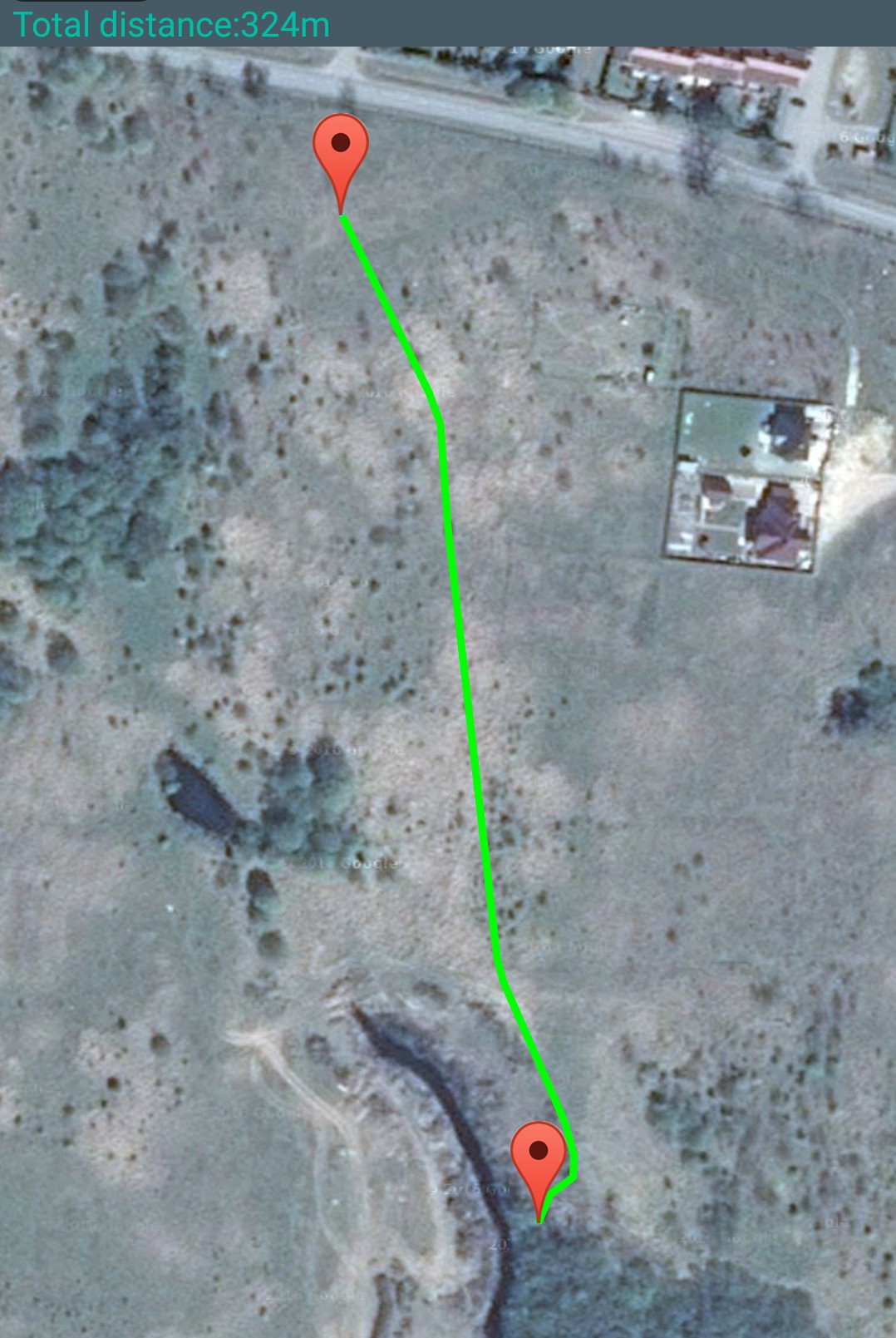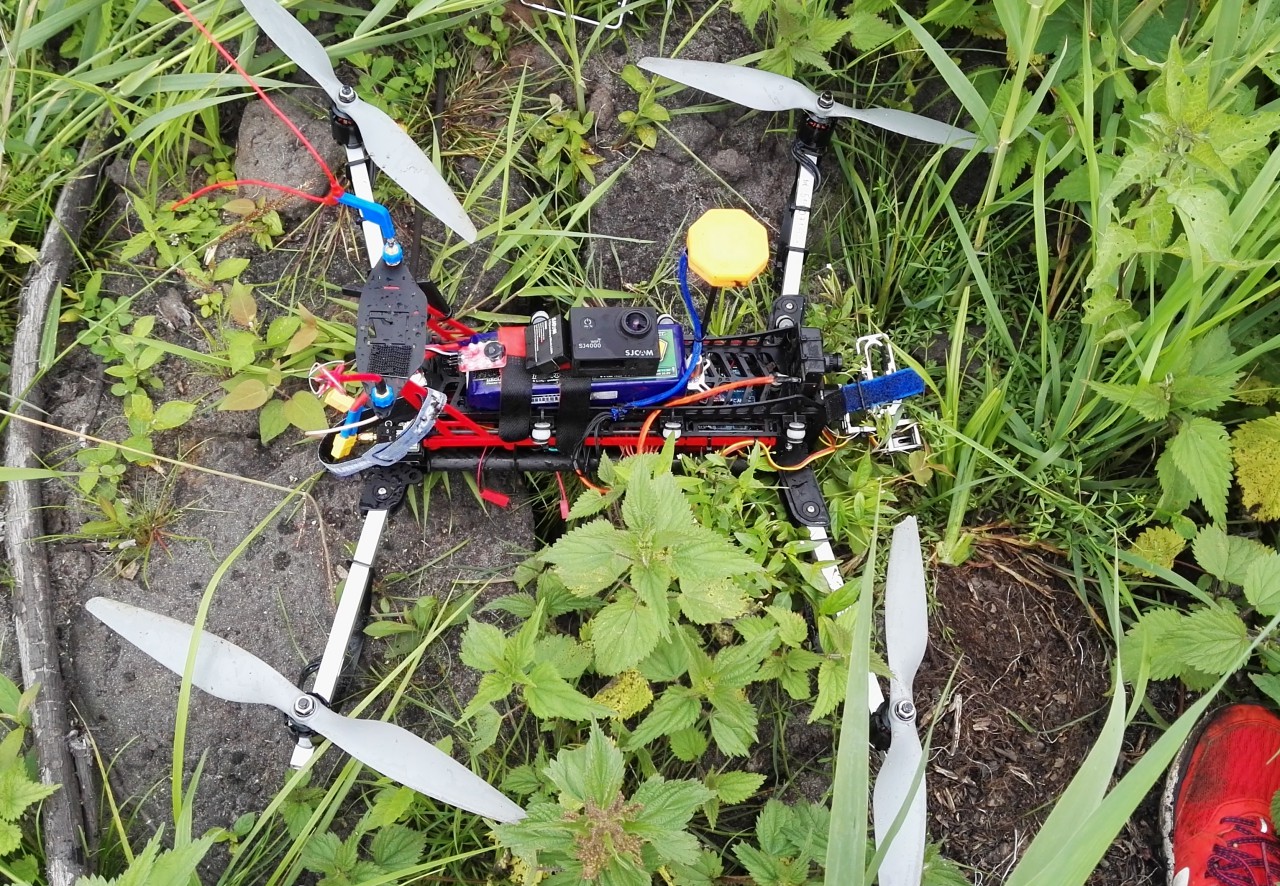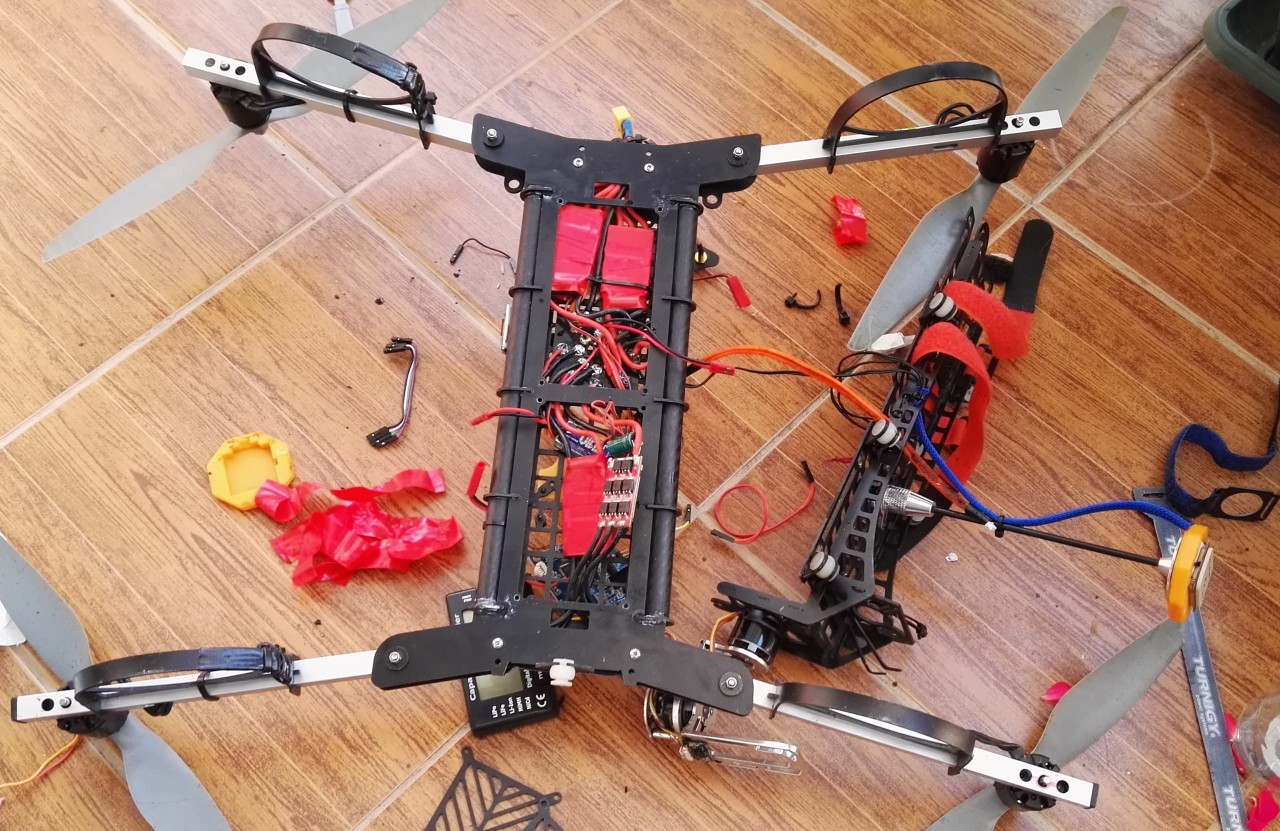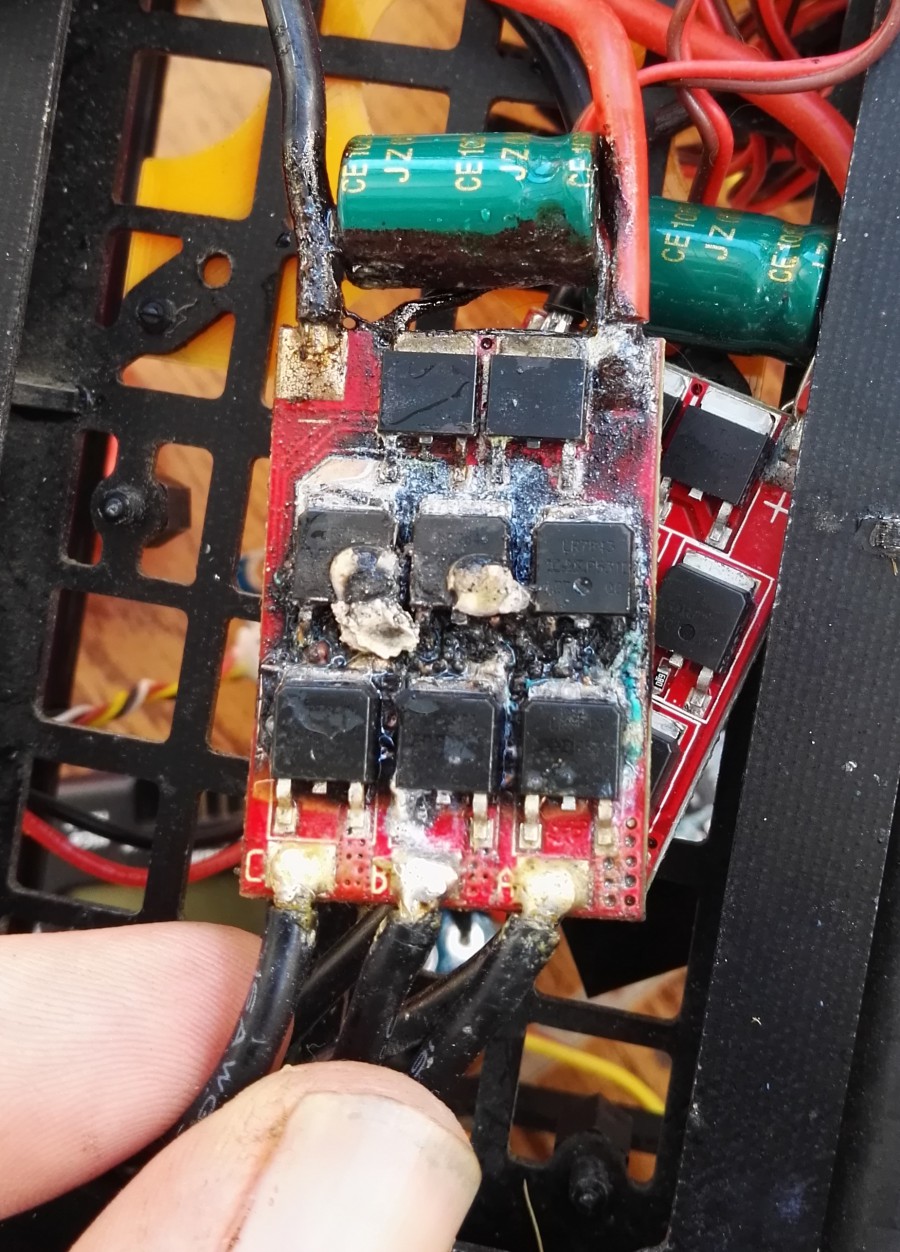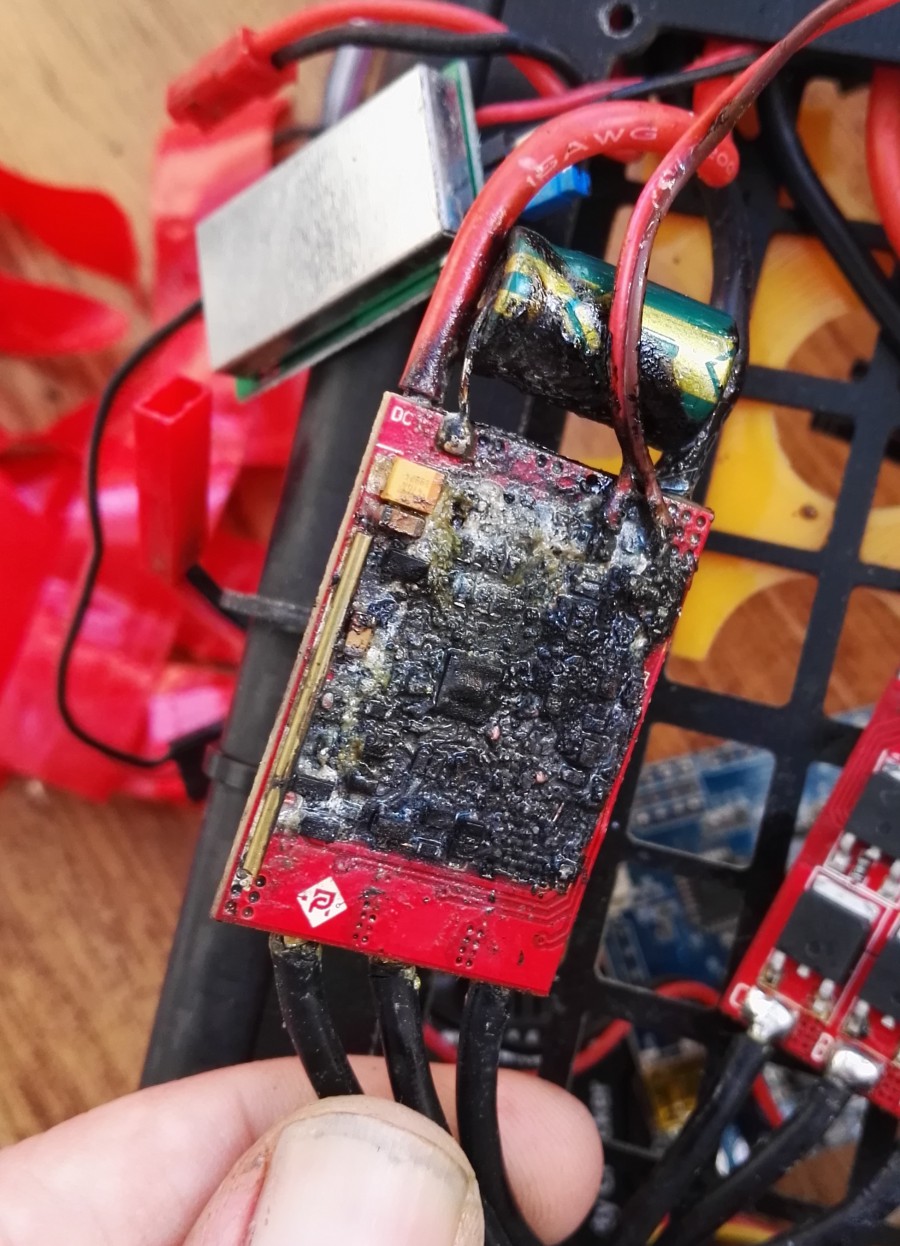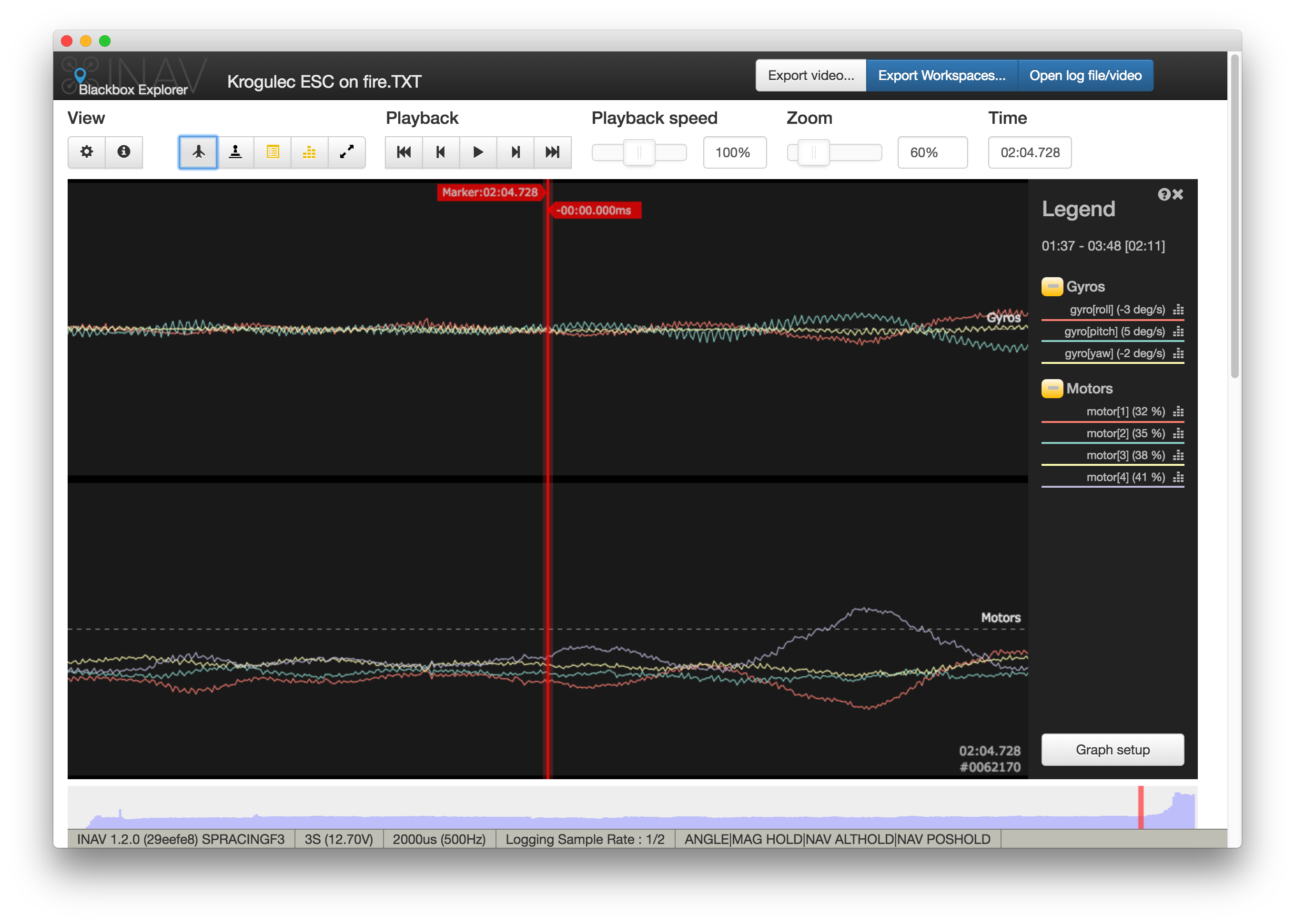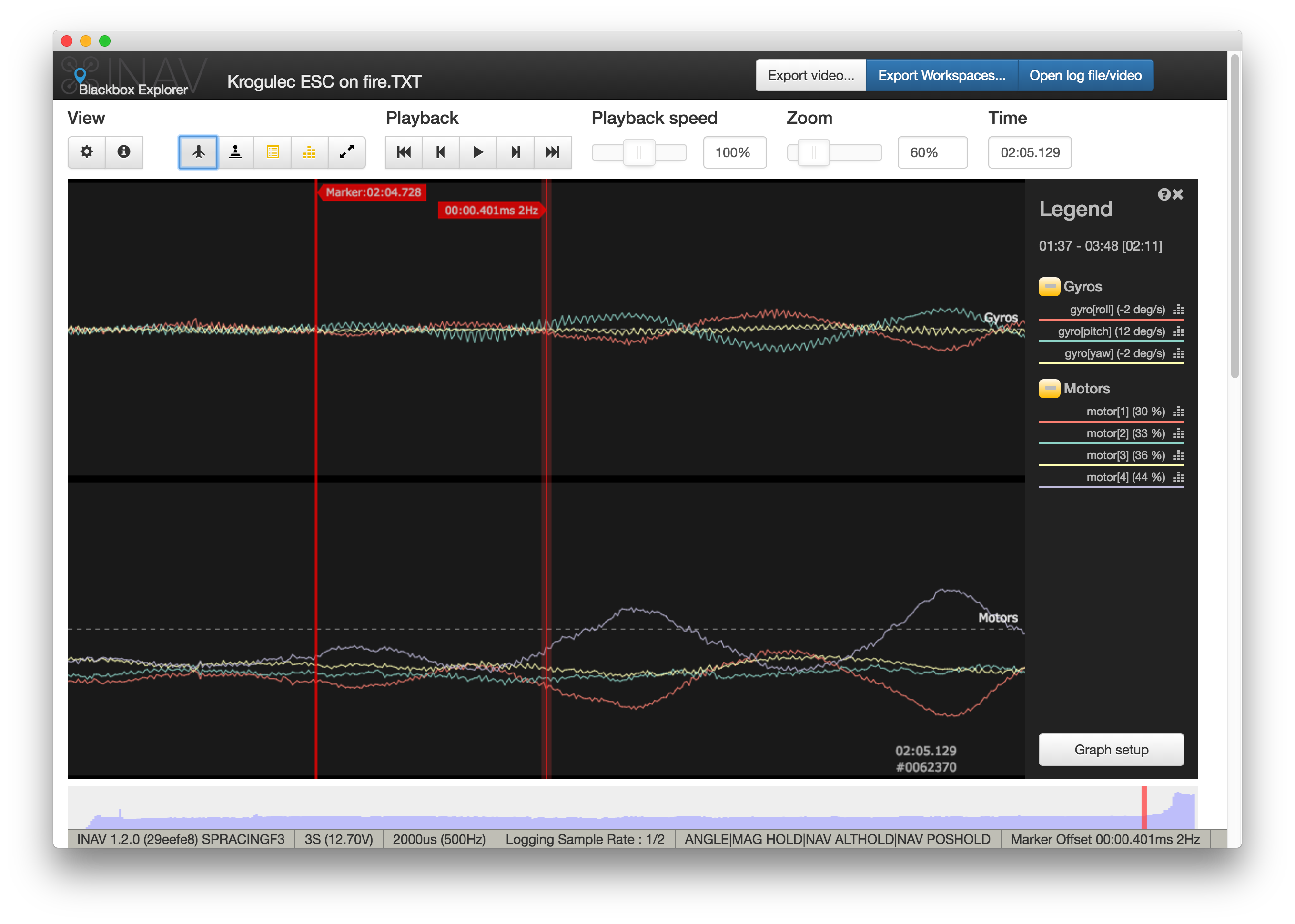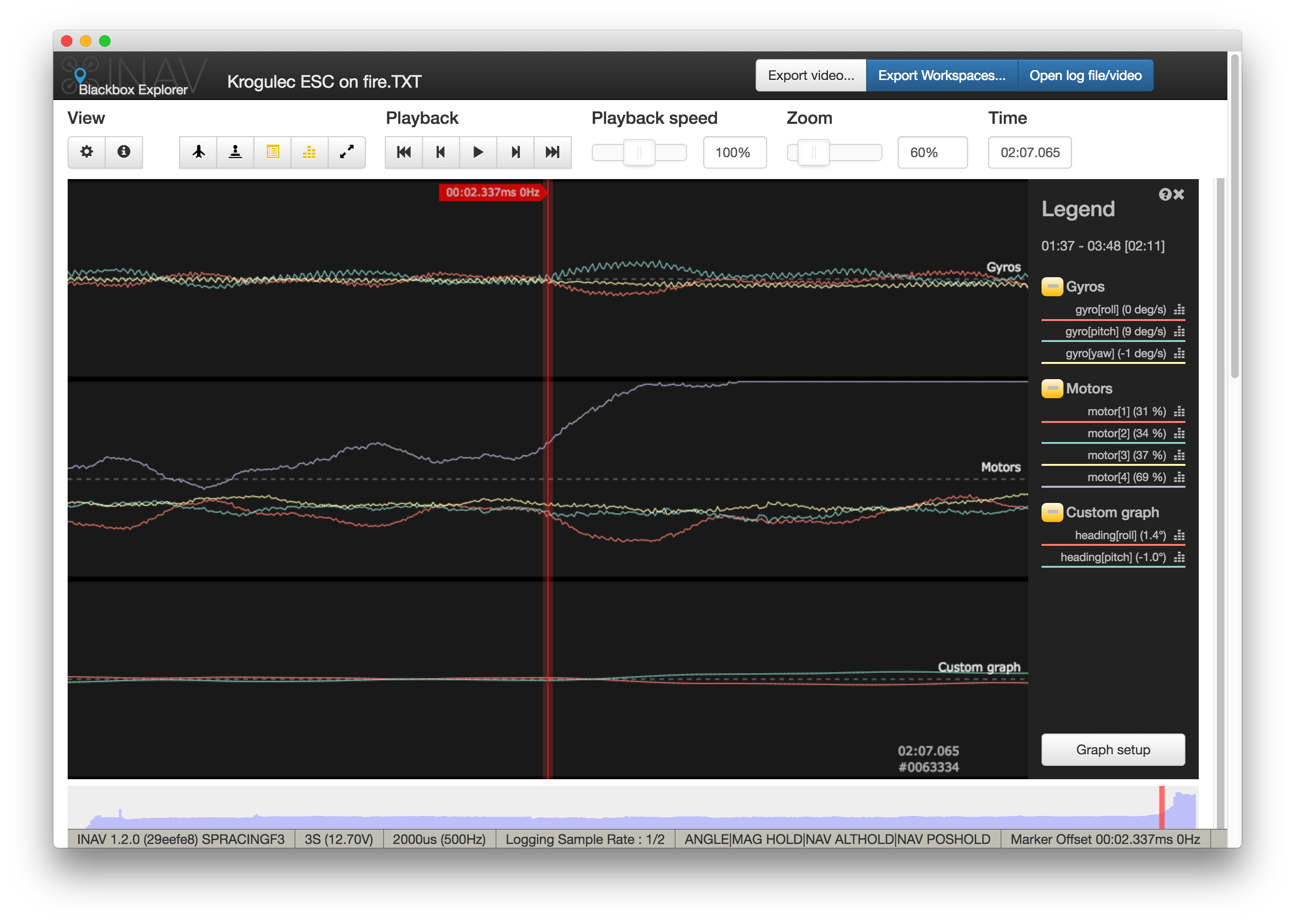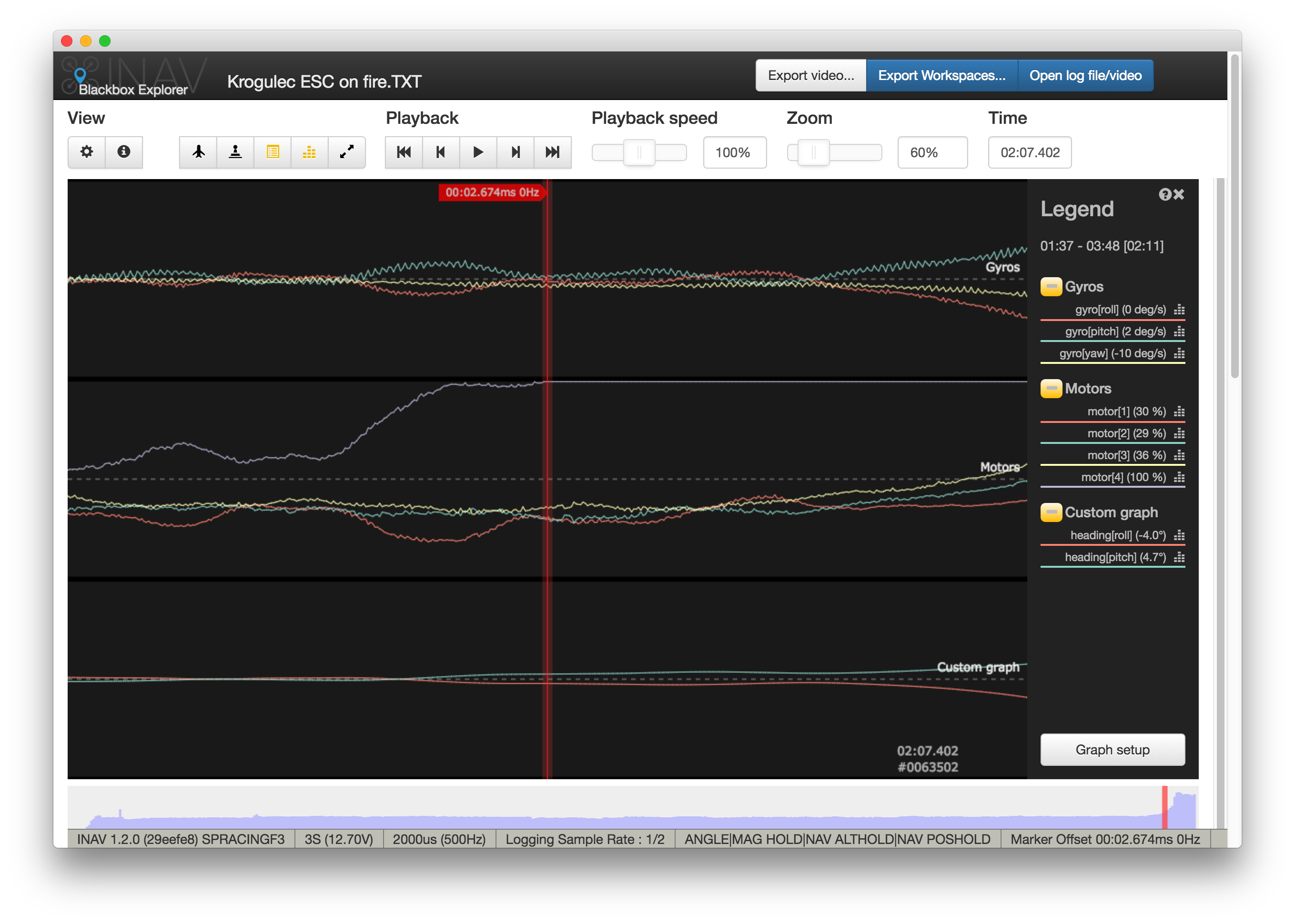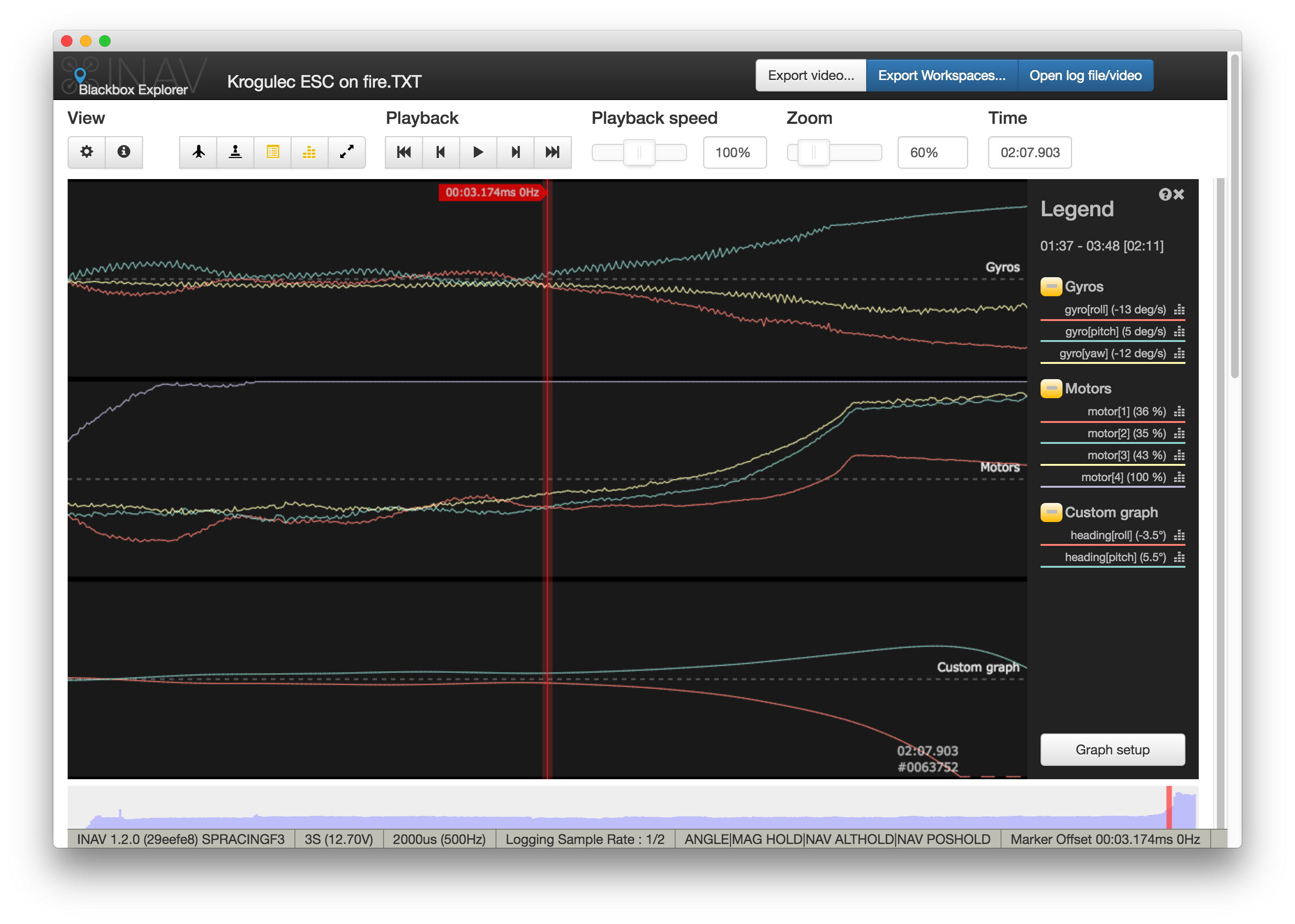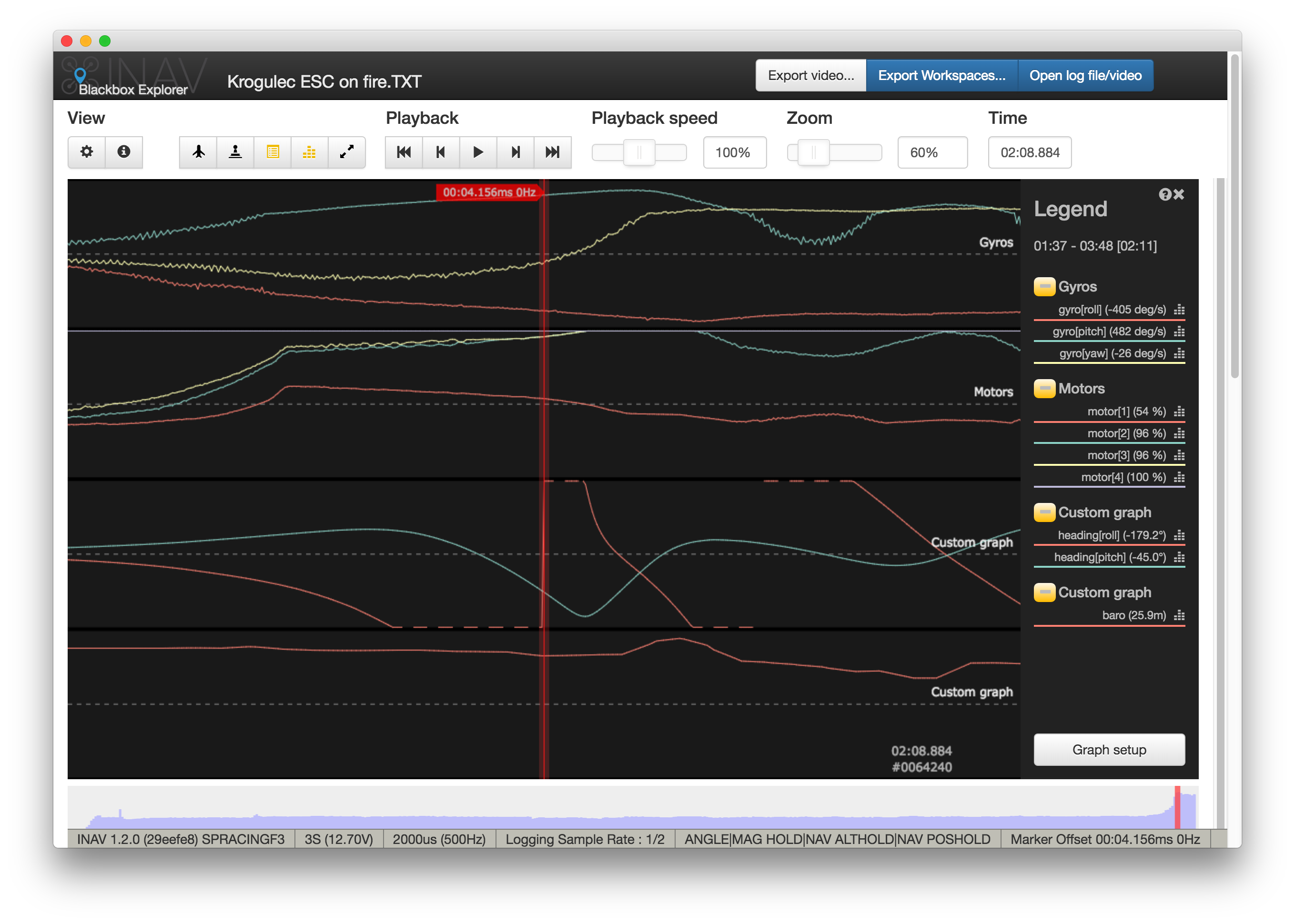Air Crash Investigation: gone in 6 seconds
"What goes up, must come down". I had an opportunity to face this old truth 2 weeks ago, when my 600mm quadcopter felt from 30 meters straight into water.
It was supposed to be a simple flight:
- take off
- fly few hundred meters away with GPS assist
- engage Return To Home and land
Dozens of missions like this in last few months, so really, nothing special. Unfortunately, like I mentioned above, not everything went as planned. 2 minutes after take off, UAV lost stability and went down with screaming motors.
Since I was recording everything using EZ-GUI, my cheap telemetry rig and LTM protocol, I had a last known position on a map.
Terrain was quite rough and it took me about 10 minutes to get there. And another 10 minutes to realize, that UAV felt into 2m wide water trough (pretty decent accuracy). When I recovered my drone, it was in decent shape, not counting smoke coming from few places.
There were two open questions:
- Which elements survived?
- Why it happened?
Answer to the first question is: looks like almost 90% of UAV survived. Confirmed losses are: 1 ESC, gimbal controller, broken propeller.
Answer to the second question is: faulty ESC that got on fire during flight. Why I know it? Because I've run an Air Crash Investigation
Evidences
Evidence #1
First clue leading to a conclusion that crash was caused by a faulty ESC was the fact, that only one ESC was burned. All other ESCs and motors survived and after drying out were working without problems (including motor connected to burned ESC).
Unfortunately this clue did not proven that ESC started to burn before it was submerged in water. After all, smoke was still coming from UAV when I pulled it out. Here comes...
Evidence #2
Blackbox log of the whole flight. I was able to see data flight controller was receiving and how it was reacting to it.
Until 02:04 [minutes:seconds from arm] log was not showing any traces of strange behavior. This is out time marker 0. All future timestamps will be relative to 02:04.
At 00:00.400ms gyro started to record stronger than usual rotation on PITCH and ROLL that quickly became constant oscillation with a 2Hz frequency.
Flight controller started to compensate by increasing power on motor #4 and reducing it on motor #1. So, either motor #4 was producing less thrust than before, or motor #1 was producing more. This was sufficient until time marker 00:02:330ms when periodic corrections were not enough to keep UAV stable. It's worth to mention that before 00:02:330ms flight controller was able to keep attitude error below 3 degrees and requested output from motor #4 was not bigger than 65%. If situation would not got worse, UAV would be able to continue flight.
Starting from 00:02.674ms flight controller started to request 100% power output on motor #4. UAV was unable to keep desired inclination, but until 00:03.162ms was able to keep inclination error below 7 degrees.
Starting from 00:03.162ms total thrust was not enough to keep desired altitude, and to compensate, FC started to request more thrust on other motors.
Starting from 00:03.665ms it was clear that situation is beyond recovery. Stability was lost, ROLL inclination raised above 30 degrees and was growing rapidly. Altitude stared to drop.
At 00:04.156ms UAV was inverted for the first time.
At 00:04:239ms FC started to request full power on motors #2, #3 and #4, what helped for a fraction of a second in terms on altitude correction. Did not helped rotation that started to exceed 600 degrees per second on ROLL and PITCH. UAV was tumbling and accelerating towards ground.
Everything ended at 00:06.306ms when log ends. UAV has hit water and power supply was disturbed.
Now, guess which ESC has burned? Yes, it was ESC #4, the one that appeared to loose power from the very beginning.
Why it took more that 6 seconds?
6 seconds is a lot of time. Much more than required to fell 30 meters. And for a half of that time UAV was stable and maintained altitude. ESC was failing gradually.
Most probable explanation is that ESC in deed started to burn somewhere before 02:04. Growing temperature triggered BLHeli Thermal Protection routine. When Thermal Protection engages, ESC tries to lower MOSFET/microcontroller temperature by lowering power output. Unfortunately, this does not works well in multirotors. Flight Controller required more and more power to keep stability and altitude. The very moment ESC started to fail, UAVs fate was sealed...

I'm Paweł Spychalski and I do things. Mainly software development, FPV drones and amateur cinematography. Here are my YouTube channels:

